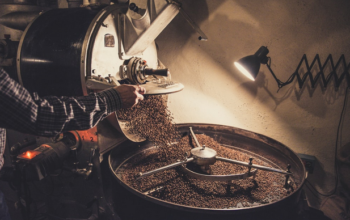For the previous articles, we have been discussing homogenization, emulsification, dispersion, cavitation, and whatnot. For this one, we will be giving you some sort of tips or factors to look for when choosing the best mixing equipment for your own application.
When manufacturing certain products like food, creams, and ointments – typically viscous emulsions – the problem sets afloat during agitation. Why? It is because air joins the components that are being blended. The huge particle size of the dispersed phase is another dilemma.
The inordinate scale of the particles makes the emulsion unbalanced. There is a scarcity in luster or sheen. What’s worse – the air that gets into the product will create bubbles; thus, it will be prone to bacteria manifestation. The entirety of the ingredients will be chemically combined with oxygen so its texture and appearance will not be fine and smooth.
What is a Vacuum Emulsifier?

Source: Ginhong mixer
As per Yuxiang, a vacuum emulsifier mixer is a piece of full-blown equipment used for absorbing, dispersing, emulsifying, homogenizing, and mixing powder. It comes with an electronic control system; peripheral oil, heating/cooling system, vacuum, water phase tank, etc. are some of the materials that can be incorporated to its utilization. The vacuum emulsifier manufactures topical medications like high-grade creams and medicinal ointments, lotions. Its usage is widely recognized in industries such as cosmetic, chemical, food, and pharmaceutical.
Furthermore, a vacuum emulsifier is defined as a multi-functional mixer capable of doing stable mixing and diaphanous finished granular. High-quality products are attained via vigorous mixing of a reversed impeller with the appropriate turbine and vacuum status.
Ginhong takes pride in its own vacuum emulsifier homogenizer. It claims that their machines deal well with viscosity and varying particle sizes. Also, the numerous, significant attributes and functions of a vacuum are utilized in such a way that amplifies the performance of blending and handling of products to obtain the optimal corollary of the mixing.
What is the significance of a vacuum status?
As the mixing environment gets subjected to a vacuum state, aeration will be prevented. When aeration is prevented, mixing blade degradation will be intercepted as well. And what’s best – you will be able to achieve ‘void-free’ and ‘risk-free’ by-product.
Ideal Features of a Vacuum Emulsifier
Let’s head straight at it! As you have now understood what a vacuum emulsifier is as well as its purpose, you can now take a look at this list. We have prepared several features of a quality vacuum emulsifier that you must consider before purchasing:
1. Mixing of immiscible liquid phases.
There are liquids that will require extra effort in the mixing process. Take oil and water for an example, which are the primary ingredients in creams and ointments. Look for this factor in considering an emulsifier.
2. Suitability for emulsion viscosity.
Another difficulty that you can encounter in combining elements is their viscosity. The thickness and texture of your samples matter in the mixing game. So, you better make sure that your machine is capable of handling this thing.
3. All-in-one unit versatility.
It is important that your equipment does the complete and proper procedure of mixing, emulsifying, homogenizing, heating, cooling and vacuum.
4. Probes and controllers for electrical heating.
In the main vacuum homogenizer machine, probes and controllers for electrical heating preferably possess a double temperature.
5. Cooling system.
Your emulsifier emits a particular amount of heat. This makes everything much hotter. But the thing is, you will need a longer homogenizing time. The longer it goes, the more heat it emanates. A cooling system will surely address this concern.
6. Transfer pump.
To make the discharging of the finished product easier and way quicker, a transfer pump is a good assistant. Your homogenizer should also act as a transfer pump.
7. Homgenizer and agitator adaptable speed.
Effective homogenization relies on the homogenizer’s speed and power. The higher the speed and power of it, the more it gets capable of working on much bigger particle sizes in bulk yields.
8. Lifting system for oil hydraulic.
Owning a vacuum emulsifier requires proper maintenance. If it has an oil hydraulic lifting system, this will not be a problem. Why? Because this feature makes cleaning and maintenance less hassle and effortless – especially in dealing with the greasiness of oil.
9. High shear inline mixer with pipes.
Horizontal high shear inline mixer with pipes is a feature that does external emulsifying and homogenizing.
10. Separate jackets for heating and cooling.
By having this feature, the temperature will be much easier to control and manage.
11. Vacuum system
The vacuum system is the highlight feature of a vacuum emulsifier. As mentioned earlier, aeration impedes a finer mix. Hence, the vacuum system. It makes sure the emulsification and mixing are done thoroughly by taking out the air bubbles that are formed during the process. Also, it transfers the ingredients from all other parts to the main emulsifier blender.
Conclusion
Homogenizers are available just about anywhere. There are a lot of manufacturers and suppliers, a varying selection of different types of mixers. This makes the search for the best and high-quality vacuum emulsifiers. But with the right things to consider in mind, you will make it! Good luck on the hunt!
Related Posts












